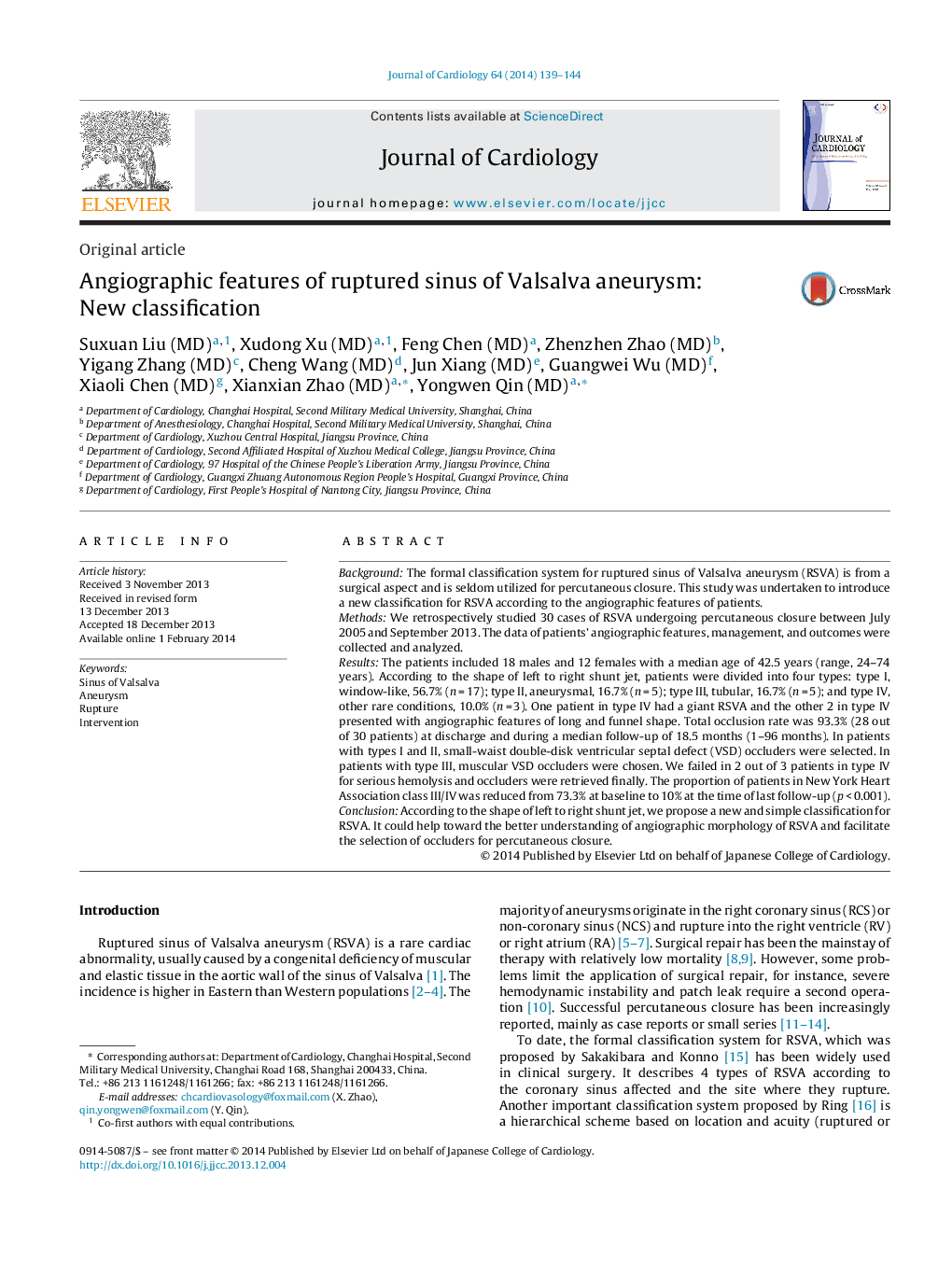| Article ID | Journal | Published Year | Pages | File Type |
|---|---|---|---|---|
| 2962964 | Journal of Cardiology | 2014 | 6 Pages |
BackgroundThe formal classification system for ruptured sinus of Valsalva aneurysm (RSVA) is from a surgical aspect and is seldom utilized for percutaneous closure. This study was undertaken to introduce a new classification for RSVA according to the angiographic features of patients.MethodsWe retrospectively studied 30 cases of RSVA undergoing percutaneous closure between July 2005 and September 2013. The data of patients’ angiographic features, management, and outcomes were collected and analyzed.ResultsThe patients included 18 males and 12 females with a median age of 42.5 years (range, 24–74 years). According to the shape of left to right shunt jet, patients were divided into four types: type I, window-like, 56.7% (n = 17); type II, aneurysmal, 16.7% (n = 5); type III, tubular, 16.7% (n = 5); and type IV, other rare conditions, 10.0% (n = 3). One patient in type IV had a giant RSVA and the other 2 in type IV presented with angiographic features of long and funnel shape. Total occlusion rate was 93.3% (28 out of 30 patients) at discharge and during a median follow-up of 18.5 months (1–96 months). In patients with types I and II, small-waist double-disk ventricular septal defect (VSD) occluders were selected. In patients with type III, muscular VSD occluders were chosen. We failed in 2 out of 3 patients in type IV for serious hemolysis and occluders were retrieved finally. The proportion of patients in New York Heart Association class III/IV was reduced from 73.3% at baseline to 10% at the time of last follow-up (p < 0.001).ConclusionAccording to the shape of left to right shunt jet, we propose a new and simple classification for RSVA. It could help toward the better understanding of angiographic morphology of RSVA and facilitate the selection of occluders for percutaneous closure.
